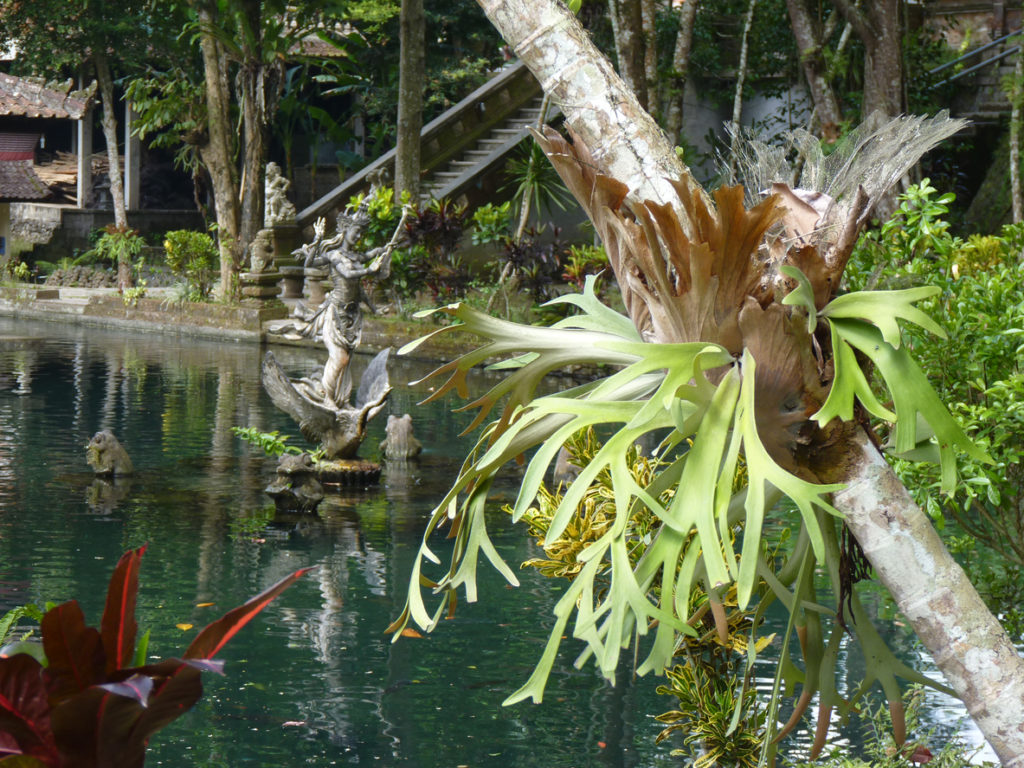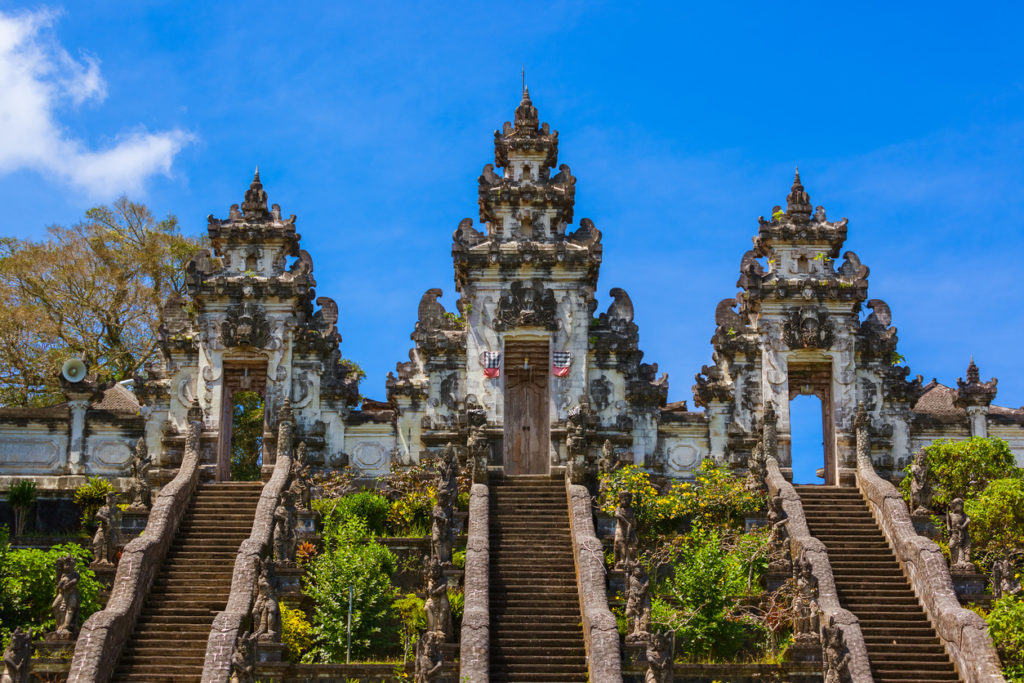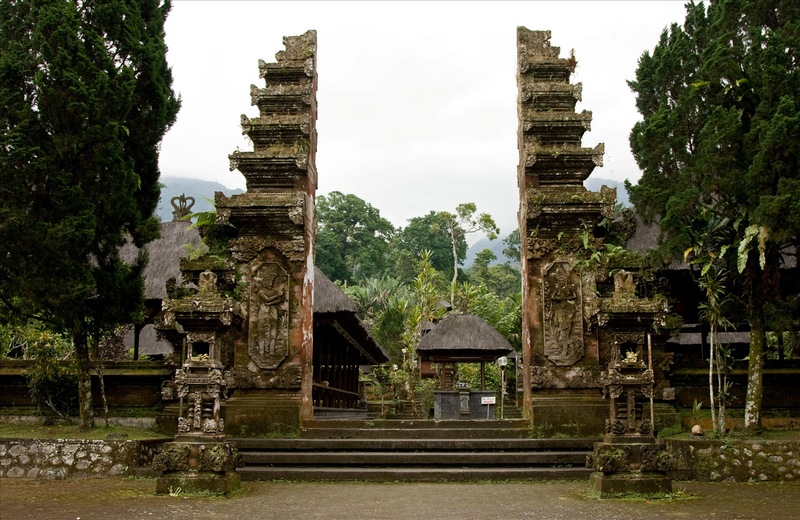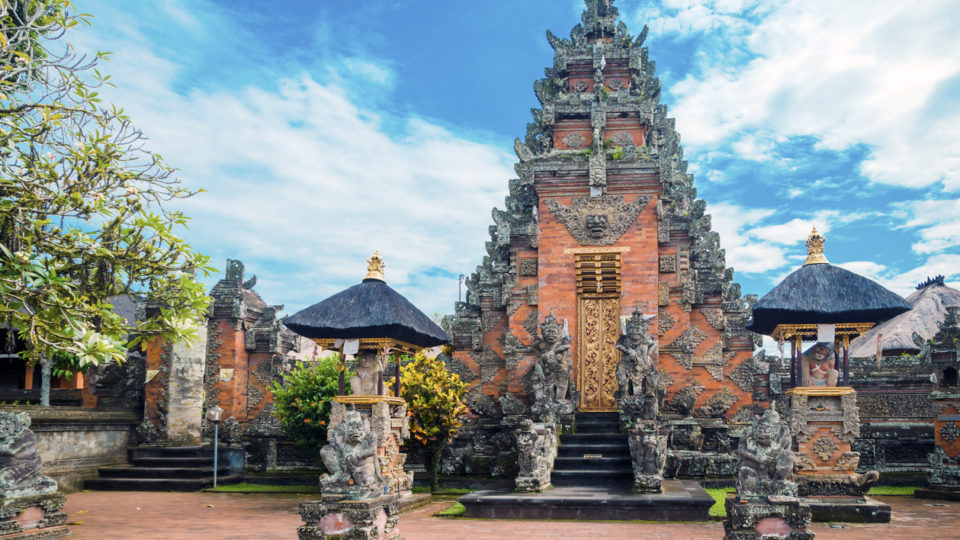Some of Bali’s travel itineraries are frankly getting a bit stale. And this couldn’t be more true of its temples. Every Tom, Dick & Harry recommends Tanah Lot for offshore beauty, Uluwatu for cliff-side sunsets, Goa Gajah for carvings, Tirta Empul for water fun, and Besakih for its religious importance. But on an island where the number of temples wheels around the 20,000 mark, it’s time to refresh the shortlist with some holy places that will delight even the most fatigued of expats.
Batuan
Restored in 1992, the millennium-old Batuan temple contains a scowling Bhoma head, giant elephants, a bull-riding Wisnu and even Siwa dancing upon a bed of skulls. Though the village (Batuan) is more famous for founding one of the three major schools of Balinese painting styles, it’s the bas reliefs and unusually stocky meru—towers—that capture the imagination here.
Gunung Kawi Sebatu

Many Balinese temples fall victim to their own success, but not Gunung Kawi Sebatu. Dedicated to Wisnu, it’s an oasis of tranquility, full of green gardens, serene ponds, colorful lotuses, and gushing springs. Despite being only 20 minutes from Ubud, it’s not yet on mainstream travel tours. This may change in the future, however, as the temple slowly gains traction with guides that specialize in Central Bali. So visit while there’s still time!
Lempuyang

One of the oldest and most important temples on Bali, Lempuyang’s regularly (and unfairly) outshone by Besakih in guide books. Named after the mountain, it sits on in the highlands of Karangasem, it towers 1,175 meters above sea level, at the top of some 1,700 steps. But getting to the top is worth it. Often sitting above the clouds, the landscape of mountain, jungle, and sky, wedged between its candi bentar—imposing split gateway—is unforgettable.
Ling Gwan Kiong
https://www.youtube.com/watch?v=92yr57FbzyE
‘The Temple of the Three Dharmas,’ Ling Gwan Kiong’s known locally as Klenteng (a colloquial term for Chinese temples). Obviously Chinese in appearance – as it’s festooned with dragons, as well as lucky reds and golds – the Taoist temple is located by the historical Buleleng harbor, just off Jalan Erlangga in Singaraja. Visit for loud murals, antique vases, and lotus-filled ponds.
Batu Ngaus
A Tanah Lot for the cognoscenti, Pura Gede Luhur Batu Ngaus temple is not much further south than its famous sibling (though annoyingly, thanks to the road-system, is nine kilometers by car along the Tanah Lot bypass). Lacking crowds and boasting a just-as-impressive backdrop from its black-lava perch by Mengening Beach, however, its black sand, coral reefs, and smudgy sunsets ultimately make it a superior choice.
Luhur Batukaru

Dedicated to Maha Dewa, the guardian of Bali’s second-highest volcano Mt. Batukaru, the 11th century Luhur Batakaru was the state temple of Tabanan when it was an independent kingdom. Located on the southern slopes of the volcano, Luhur Batukaru is a directional temple for the west of the island (most of which has its own mini-shrines to the deity). Its climate (the region’s the wettest part of Bali) ensures almost every inch of Luhur Batakaru is covered with some sort of greenery, as well as cicadas, frogs, and birdsong.




